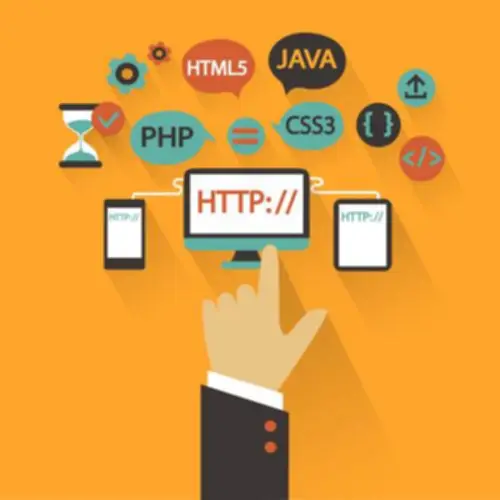Additionally, it could talk about methods for optimizing construct configurations for performance and resource efficiency. TeamCity is a user-friendly continuous integration (CI) server for professional developers, build engineers, and DevOps. It is trivial to set up and completely free for small teams and open source tasks. Pursuing a DevOps Course or DevOps Coaching can be greatly useful for professionals trying to deepen their understanding of CI/CD practices and improve their abilities in this space.
It covers the principles of CI, including frequent code integration, automated builds, and early bug detection. Moreover, it discusses the benefits of CI in bettering code quality, lowering integration points, and accelerating the event cycle. With its wide range of features and integrations, it is a highly effective tool that may adapt to the needs of any improvement team. This section highlights the benefits and benefits that organizations can derive from implementing TeamCity of their DevOps practices. Moreover, it could contact upon the scalability, reliability, and cost-effectiveness of TeamCity as a CI/CD resolution what is teamcity.
Which Statement Describes One Component Of The Calmr Method To Devops?
This section provides a complete introduction to TeamCity, explaining its definition, purpose, and core functionalities. Launched several releases ago, Kubernetes executor leverages your current Kubernetes clusters by turning them into unbiased orchestrators for TeamCity builds. In Distinction To with common cloud brokers which are totally managed by TeamCity, this integration allows the server to dump the construct queue to a k8s cluster, granting the latter full management over the pod lifecycle.
TeamCity is a powerful steady integration and delivery server that automates construct, take a look at, and deployment processes for software program development teams. It provides a user-friendly interface, supports a extensive range of development tools and frameworks, and supplies intensive integration capabilities. With TeamCity, groups can efficiently collaborate, streamline improvement workflows, and ship high-quality software program quicker. Anu is a seasoned DevOps and Cloud Security professional with deep expertise in continuous integration and deployment workflows. With extensive experience in TeamCity, he makes a speciality of optimizing build configurations, ensuring seamless code integration, and maintaining environment friendly deployment pipelines.
Options And Capabilities Of Teamcity In Devops Workflows
Moreover, it may discuss best practices for managing VCS integrations and optimizing workflows for collaboration and code synchronization. Here, the main focus is on configuring initiatives and defining build configurations inside TeamCity. It explains the method to create initiatives, set up construct configurations, define build steps, and configure build triggers to automate the CI/CD pipeline. Additionally, it may cover superior configuration choices similar to build dependencies, parameterization, and versioning methods. Right Here, the major target is on exploring the various options and capabilities of TeamCity that contribute to its effectiveness in DevOps workflows.
- JetBrains, the company behind TeamCity, uses the software for its own development process.
- Firstly, it leads to faster time to market, as the event process is streamlined and automated.
- It helps growth teams automate the process of constructing, testing, and deploying their applications.
- A private construct is a build out of the frequent build sequence which generally uses the adjustments not but dedicated into the model control.
- Upon completion of the construct, TeamCity shops the resulting recordsdata, termed build artifacts, in a repository.
JetBrains is the corporate behind popular IDEs like IntelliJ IDEA and ReSharper, and this experience has been used to make TeamCity a strong and user-friendly tool. The integration of TeamCity with these IDEs also provides a seamless development expertise, making it easier for developers to construct, check, and deploy their purposes. TeamCity was first launched by JetBrains in 2006, and it has been repeatedly developed and improved since then. The initial release was focused on providing a strong and user-friendly CI server, with features like build chains and real-time reporting. Firstly, it leads to quicker time to market, as the development process is streamlined and automated. This means that new options could be delivered to customers more quickly, giving you a aggressive edge.
Upon completion of the construct, TeamCity stores the resulting information, termed construct artifacts, in a repository. These artifacts embody components like the compiled code, take a look at https://www.globalcloudteam.com/ results, and deployment packages. These elements are set up by project admins and typically can not be edited by regular developers.

Relying on authorization modules configured by your server administrator, you probably can log in by way of a daily username/login pair, or utilizing 3rd-party providers (GitHub, Google, Bitbucket Server, and others). As a half of our ongoing effort to simplify and enhance the TeamCity UI, this launch introduces several updates. Highlights include a redesigned facet panel that may now auto-hide to maximise your workspace, a brand new Digital Trust What’s New widget to maintain you informed of key updates, an improved Projects dropdown menu, and extra.

TeamCity is a Steady Integration and Deployment server that gives out-of-the-box continuous unit testing, code quality analysis, and early reporting on build issues. A simple set up process enables you to deploy TeamCity and begin enhancing your launch administration practices in a matter of minutes. TeamCity helps Java, .NET, and Ruby growth and integrates completely with major IDEs, version management techniques, and problem monitoring systems. This section explores the process of integrating version management systems (VCS) such as Git, SVN, or Mercurial with TeamCity. It supplies instructions on configuring VCS roots, organising authentication, and defining VCS triggers to automatically trigger builds upon code adjustments.
TeamCity is a key player within the DevOps landscape, a strategy that goals to unify software program growth (Dev) and software program operation (Ops). DevOps is all about breaking down the limitations between these historically siloed teams, encouraging collaboration, and selling a tradition of shared responsibility for the success of the software program. TeamCity, with its give consideration to automation, integration, and collaboration, embodies the principles of DevOps. These alternatives supply various features and integration capabilities, catering to completely different project necessities and group preferences in managing construct, test, and deployment processes. Its UI is considered better than Jenkins and it offers distinctive options like construct history, build chain instruments, supply control. It permits developers to combine, code, and is much less complicated to configure with simple steps.
